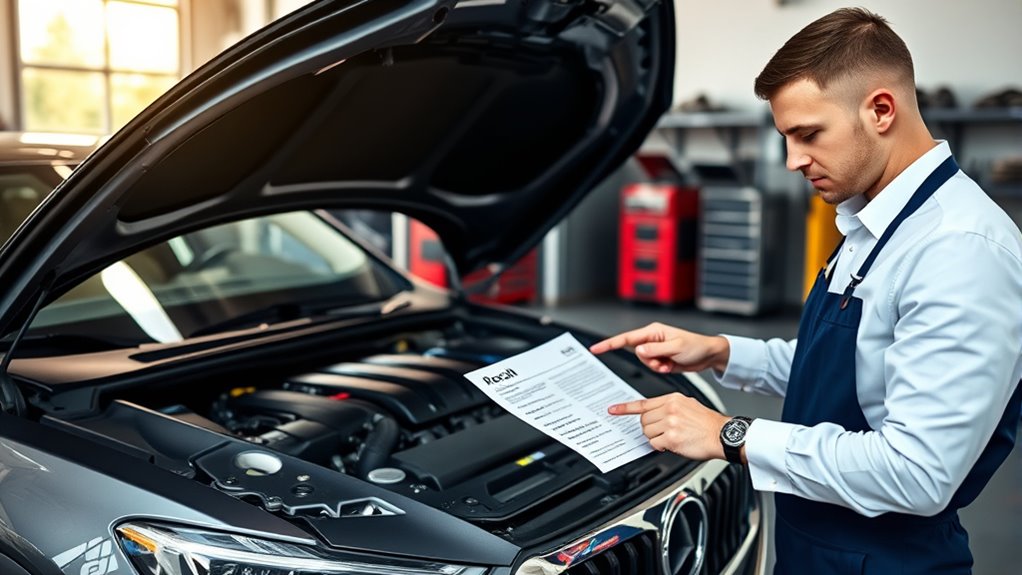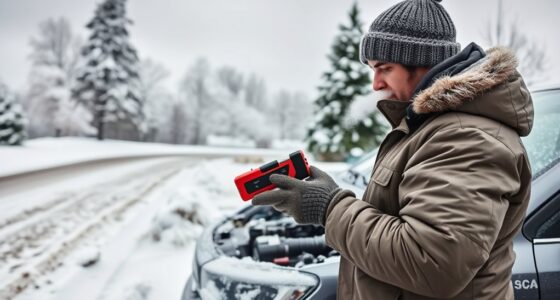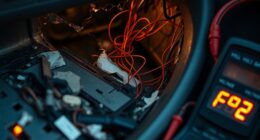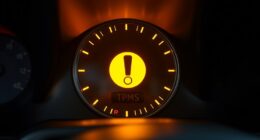Vehicle recalls happen when manufacturers find safety flaws or compliance issues in your vehicle. They notify you with a recall notice, explaining the problem and steps to fix it. Typically, you’ll need to visit an authorized service center for free repairs or replacements. Responding quickly helps keep you safe and ensures your vehicle stays roadworthy. If you want to understand how recalls work and why they matter, keep exploring this important topic further.
Key Takeaways
- Vehicle recalls are initiated by manufacturers to fix safety defects or non-compliance issues, preventing accidents and injuries.
- Manufacturers notify owners through recall notices detailing the problem, risks, and corrective actions.
- Affected vehicles are repaired at authorized service centers free of charge, following safety inspections.
- Proper maintenance and re-inspection help identify issues early and ensure defect resolution.
- Responding promptly to recalls reduces safety risks and maintains vehicle reliability and roadworthiness.
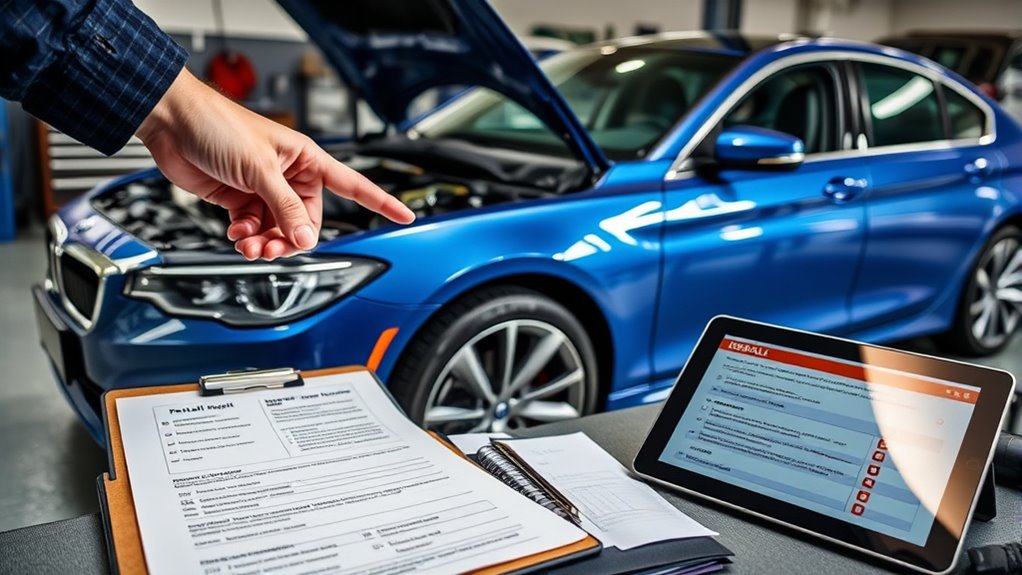
Have you ever wondered what a vehicle recall really means and why it matters? When a manufacturer discovers a safety defect or non-compliance with safety standards, they initiate a recall to address the issue. This process is vital because it helps prevent accidents, injuries, or even fatalities caused by faulty vehicle components. The recall process typically begins with a safety inspection, where manufacturers or regulatory agencies identify potential problems through customer complaints, warranty claims, or routine testing. Once a defect is confirmed, the manufacturer will notify the appropriate authorities and issue a recall notice to affected vehicle owners. This notice explains the problem, the risks involved, and the steps needed to fix the issue. You might receive a letter, email, or notification through your vehicle’s onboard system, alerting you to the recall.
Understanding the recall process is key to guaranteeing your safety and that of others on the road. After a recall is announced, you’re usually instructed to bring your vehicle to an authorized service center. During this visit, a safety inspection is performed to assess the scope of the defect and verify if your specific vehicle is affected. If it is, the repair, replacement, or modification needed will be carried out at no cost to you. The goal of the safety inspection during the recall process is to confirm whether your vehicle has the defect and to implement the necessary fixes promptly. Sometimes, the issue is straightforward, like replacing a faulty airbag or fixing a braking system. Other times, more extensive repairs might be required, but the manufacturer covers all costs, recognizing the importance of safety. Additionally, proper maintenance can help identify potential issues early before they lead to recalls.
It’s important to stay proactive and responsive when your vehicle is recalled. Ignoring a recall not only puts you at risk but also other drivers and pedestrians. Fortunately, the recall process is designed to be transparent and straightforward. Once your vehicle is repaired, it should be re-inspected to ensure the defect has been properly addressed. This step guarantees that the safety measures are effective and that your vehicle is safe to drive again. Remember, recalls are issued for your protection, and responding promptly helps minimize risks. Staying informed through official channels and promptly scheduling repairs ensures your vehicle remains safe, reliable, and compliant with safety standards. Ultimately, understanding the recall process empowers you to take quick action when necessary, keeping you and everyone around you safe on the road.
Frequently Asked Questions
How Long Does a Vehicle Recall Process Typically Take?
The recall process usually takes a few weeks to several months, depending on the manufacturer and the issue. Once you receive the recall notification, you should schedule the repair promptly. The timeline includes parts availability, repair scheduling, and the actual fix. Stay in touch with your dealer, as delays can happen, but acting quickly helps guarantee your vehicle’s safety and gets the recall resolved efficiently.
Can I Still Drive My Vehicle After a Recall Notice?
You can usually still drive your vehicle after a recall notice, but it depends on the recall safety issue. It’s essential to get a vehicle inspection as soon as possible to determine if your vehicle is safe to operate. If the recall involves a serious safety defect, the manufacturer might advise stopping driving until repairs are completed. Always follow the manufacturer’s instructions and schedule the necessary repairs promptly.
Are All Vehicle Recalls Publicly Disclosed Immediately?
No, not all vehicle recalls are publicly disclosed immediately. Some manufacturers keep recall secrecy and send confidential notifications directly to affected owners first. This means you might not see the recall in public databases right away. However, once the information becomes available publicly, you can check reliable sources like NHTSA or your manufacturer’s website to stay informed. Always stay alert for official notifications about recalls affecting your vehicle.
What Should I Do if My Vehicle Isn’t Included in a Recall?
If your vehicle isn’t included in a recall, you should still stay vigilant. Consider alternative repairs to address any issues, and keep records of maintenance. Contact the manufacturer to inquire about potential compensation if you experience problems related to the recall. Staying informed and proactive guarantees your safety and may help you access benefits or solutions outside official recalls, giving you peace of mind and protection on the road.
How Can I Verify if a Recall Has Been Completed on My Vehicle?
You can verify if a recall’s been completed by checking your recall notification or visiting the manufacturer’s website. Don’t just sit around waiting for a miracle—schedule a service appointment, and have them confirm the repair. It’s like a “trust me, I’ll fix it” note, but with proof. Stay proactive, stay safe, and make sure your vehicle’s recall is checked off the list—your car will thank you.
Conclusion
Now that you know the basics of vehicle recalls, think about your own car’s safety. Could it have a hidden flaw waiting to surface? Ignoring recall notices might seem harmless, but it could lead to unexpected trouble when you least expect it. Stay vigilant, stay informed, and don’t let a small oversight turn into a big problem. The next recall notice could be closer than you think—are you prepared to act before it’s too late?
